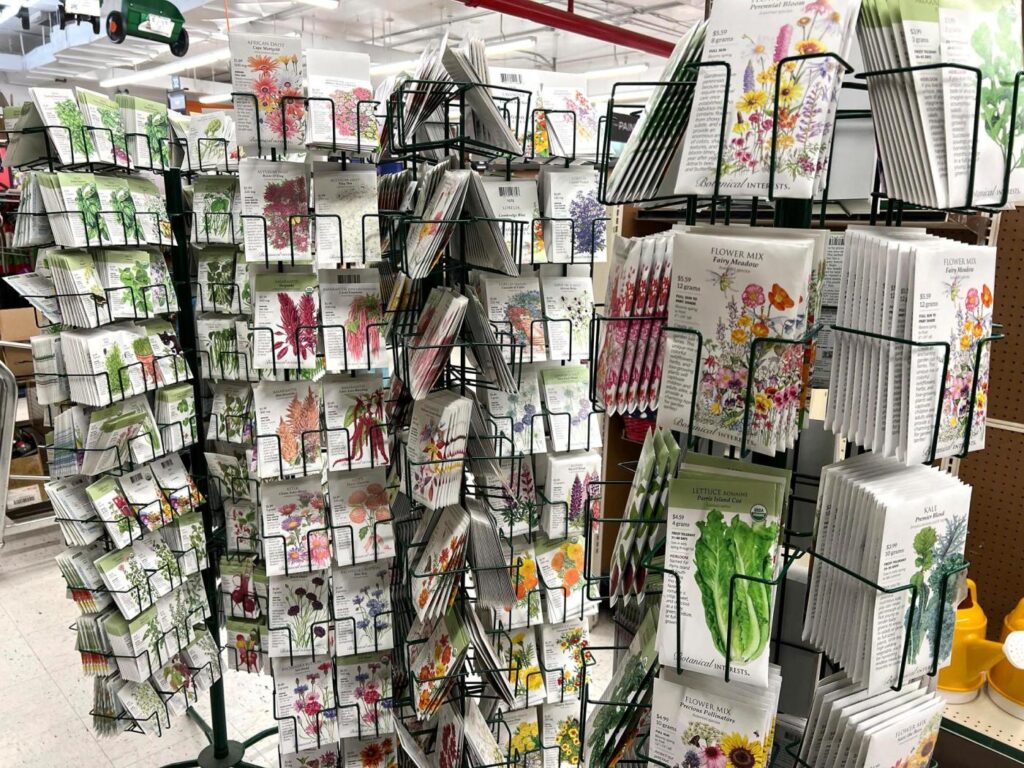
By Jeff Lowenfels
Like the swallows returning to Capistrano, seed racks are back! These harbingers of spring are now appearing in stores and nurseries all over North America, exciting gardeners with visions of a new gardening season.
Without dampening the excitement that these spinning or stationary racks generate, I do suggest that both novice and expert gardeners alike be careful approaching them. Seed racks are magical. They attract gardeners like magnets attract iron filings. It doesn’t matter that you may have perfectly good seeds left over from last year or that you already ordered seeds from a catalog; you need to check out what is being offered.
Next thing you know, 10 minutes has passed and you are wandering to the cash register with a handful of seed offerings. What happened?
Seed sellers know gardeners are hard-wired by the “Jack and The Beanstalk” story. Plant a magical seed — and all seeds are magical — and up shoots the stalk. If we just choose half a dozen of those hand-size packets of seeds, we can grow a half acre (or even more ) of food or flowers. All it takes are some seeds. Here they are, all in one place.
So, a few rules gardeners should keep in mind when they stumble upon a spring seed rack:
First, never buy seeds unless you have a garden plan and one that calls for that type of seed. (This goes for catalog and online buying as well; start with a plan.) It is OK to take notes on what’s available from racks (use your phone’s note app), but don’t buy any packets until you know you need them and have a place to grow them. Go home, make a simple plan and then come back.
Second, never buy a seed packet based on its picture. These are designed to look so good you will reach out and take the packet, and once it’s in your hand you won’t put it back. Simply put, the picture is a sales gimmick and does not give you the information you need to make a smart purchase.
That information is on the back of the packet, and the third rule of seed racking is that you study this info carefully before buying. The back describes the plant as an annual, perennial or biennial, which is good to know. Where appropriate, the range of growing zones will be listed. And, so important, here’s where you will find how tall the plant grows and its expected spread, so you can space seeds or seedlings appropriately.
Related Articles
What’s happening with your citrus trees? Readers share their stories
5 things to do in the garden this week: Get planting those vegetables
Former ‘Clean House’ host Mark Brunetz talks about his Scandalabra design podcast
What to know about growing rhubarb
Why this low-water fruit tree is good to grow in limited spaces
As important, the back of the pack should list how many days it takes for the plant to go from germination to maturity. (You should already know how long your growing season happens to be.)
There are often additional growing instructions, too. These will indicate if growing the plant matches your level of expertise.
And always look for this year’s date printed at the bottom of the packet so you know you are getting fresh and viable seeds, not previous years’.
Last, but not least, note the number of seeds in the packet. Usually, a single packet will contain more than you need. (How many cabbage plants does your family want you to plant, anyhow?)
I’ve had encounters with seed racks in a local mall. My glasses may be all fogged up from coming in from the cold, but I see them and they pull me in. Within minutes, I am wandering around with a handful of seed packets I really don’t need. Fortunately, my wife makes me put them back (unless they are arugula seeds).
There should be a fourth rule of seed racking: Make sure your spouse or some other responsible soul is with you.
—-
Jeff Lowenfels writes regularly about gardening for The Associated Press. His books include “Teaming With Microbes,” “Teaming With Fungi” and “Teaming With Nutrients.” He can be reached at jeff@gardener.com.
